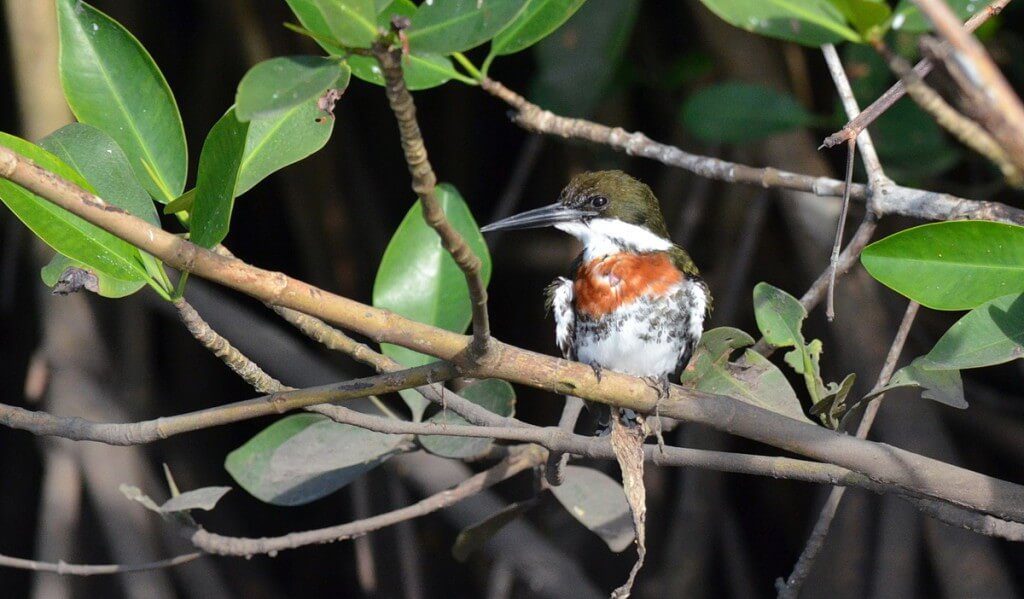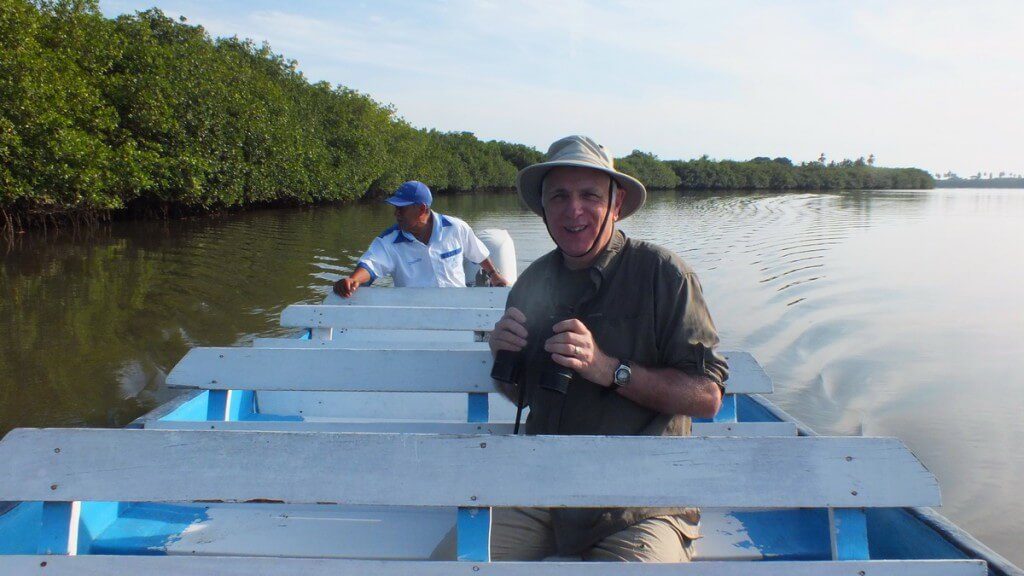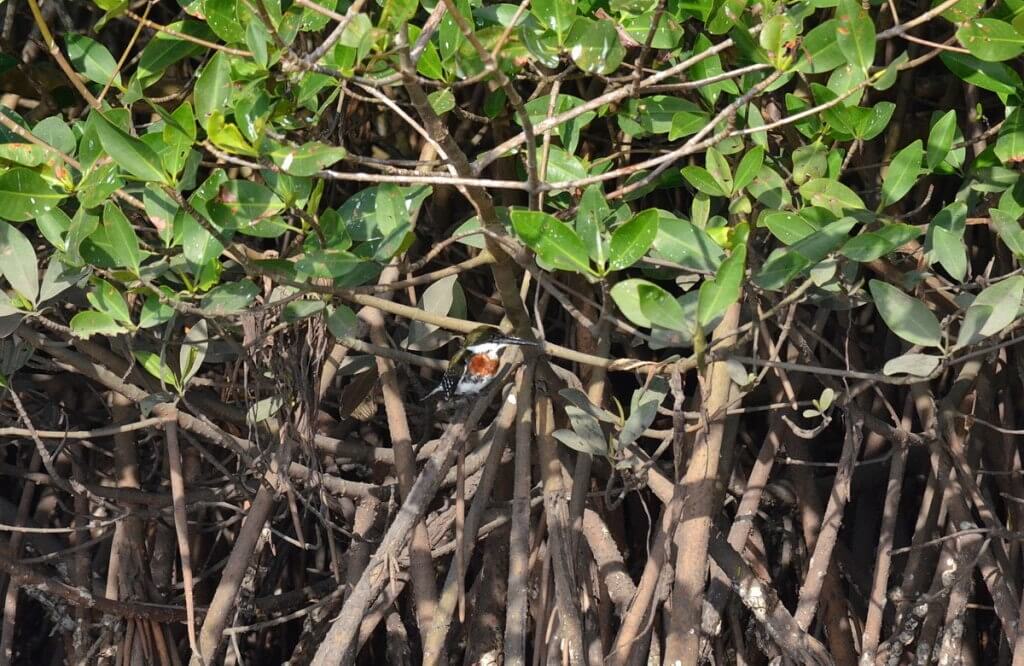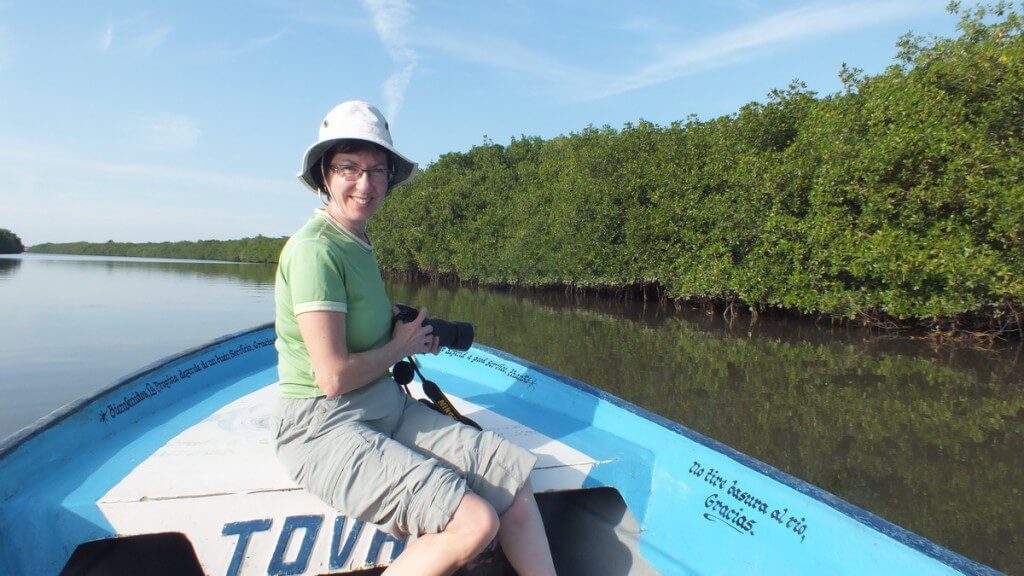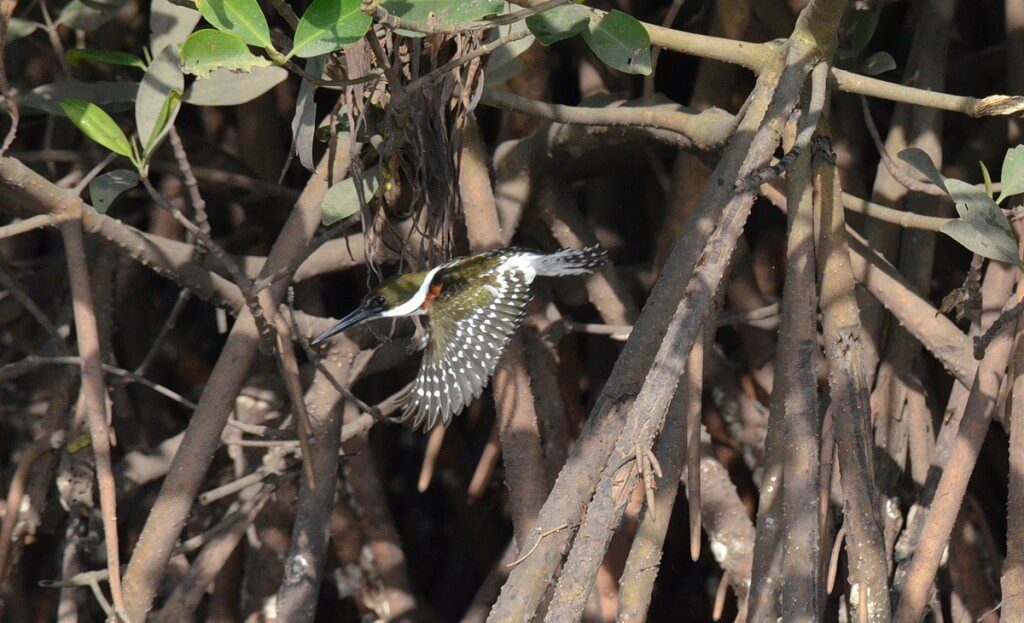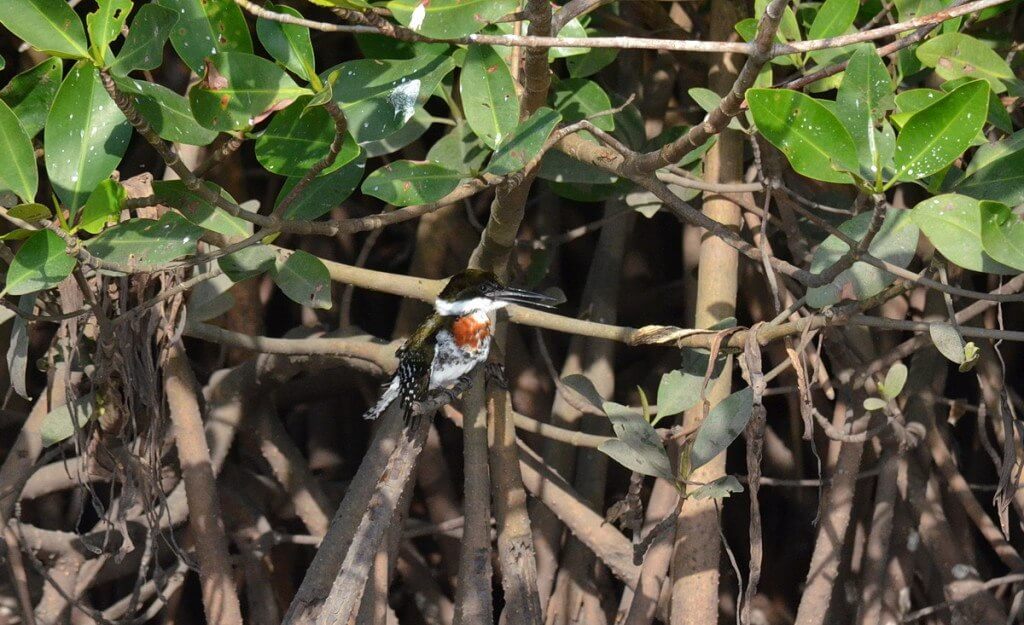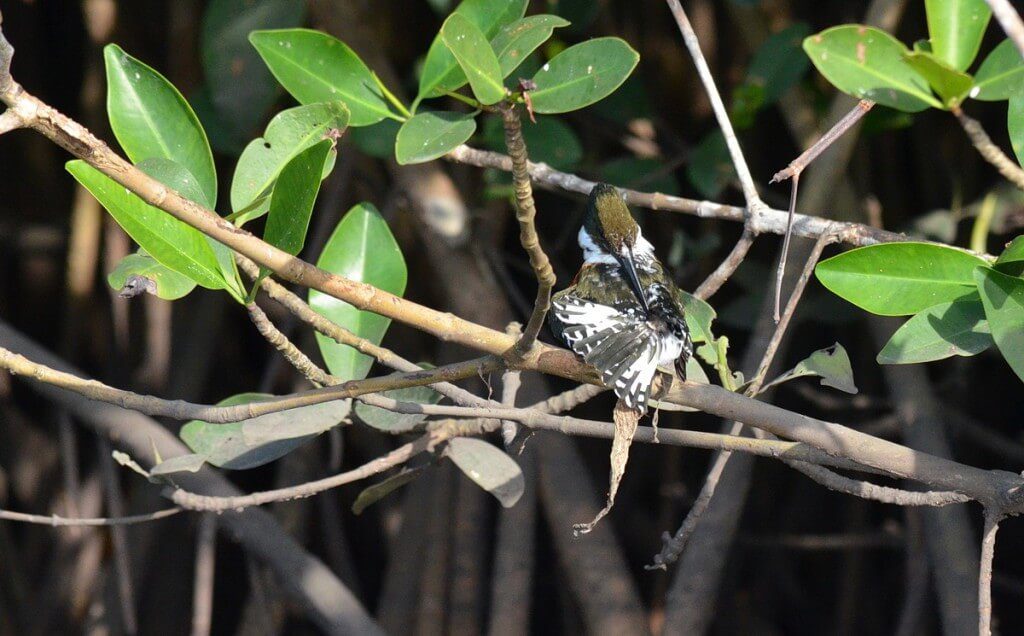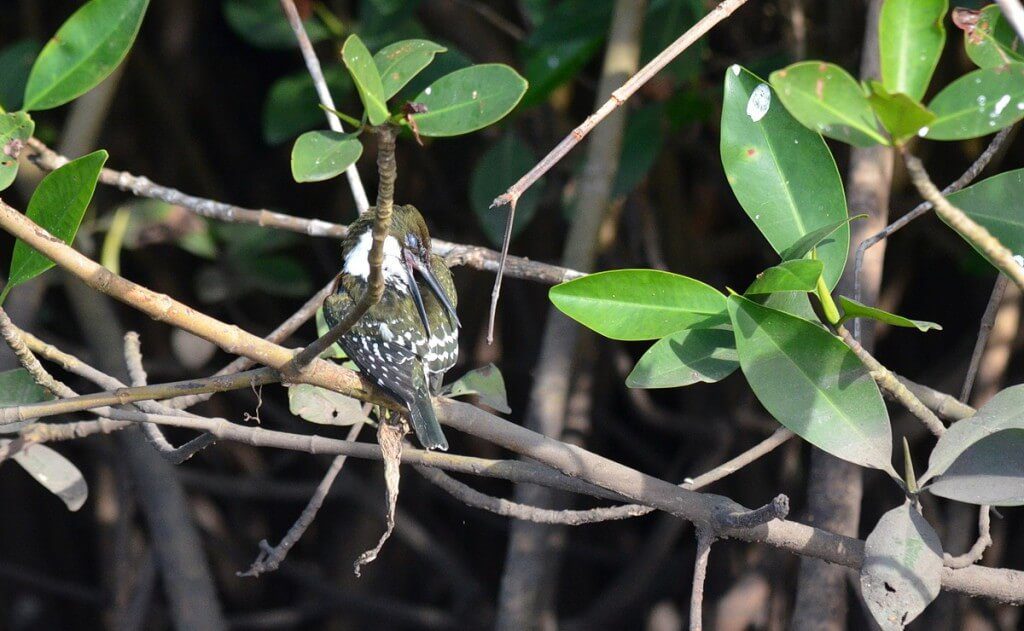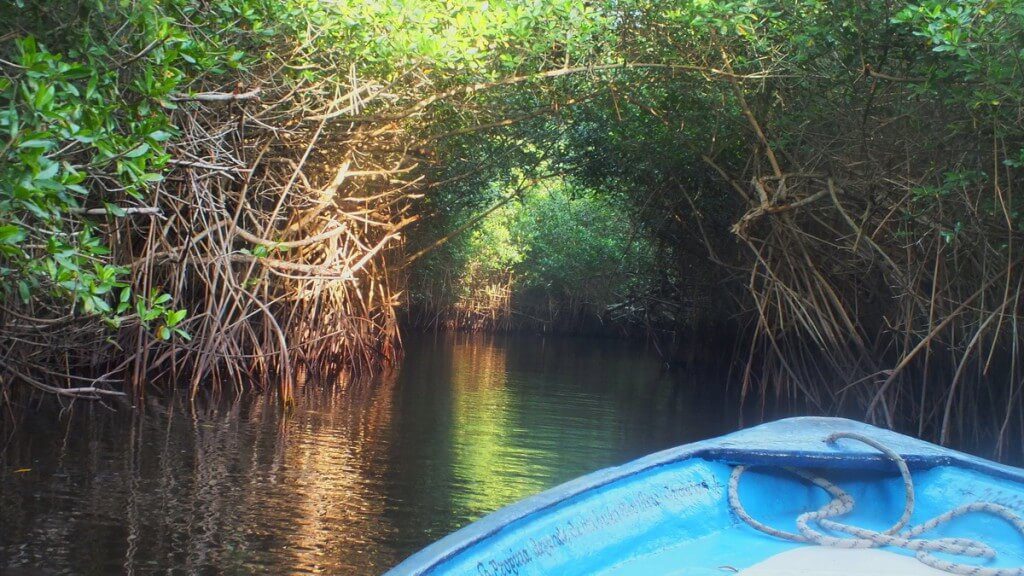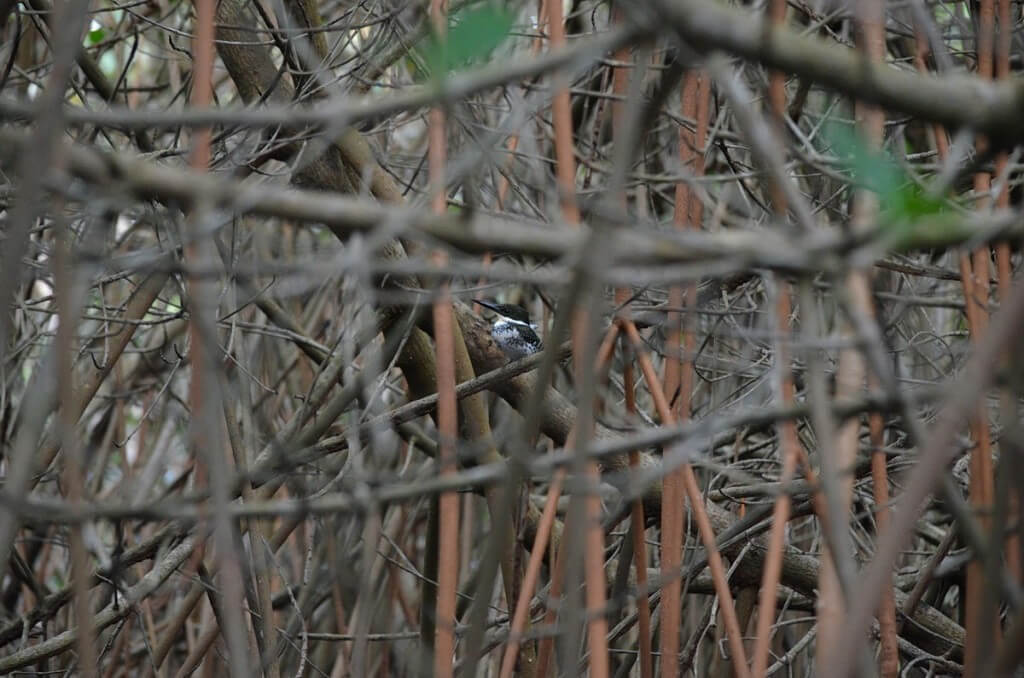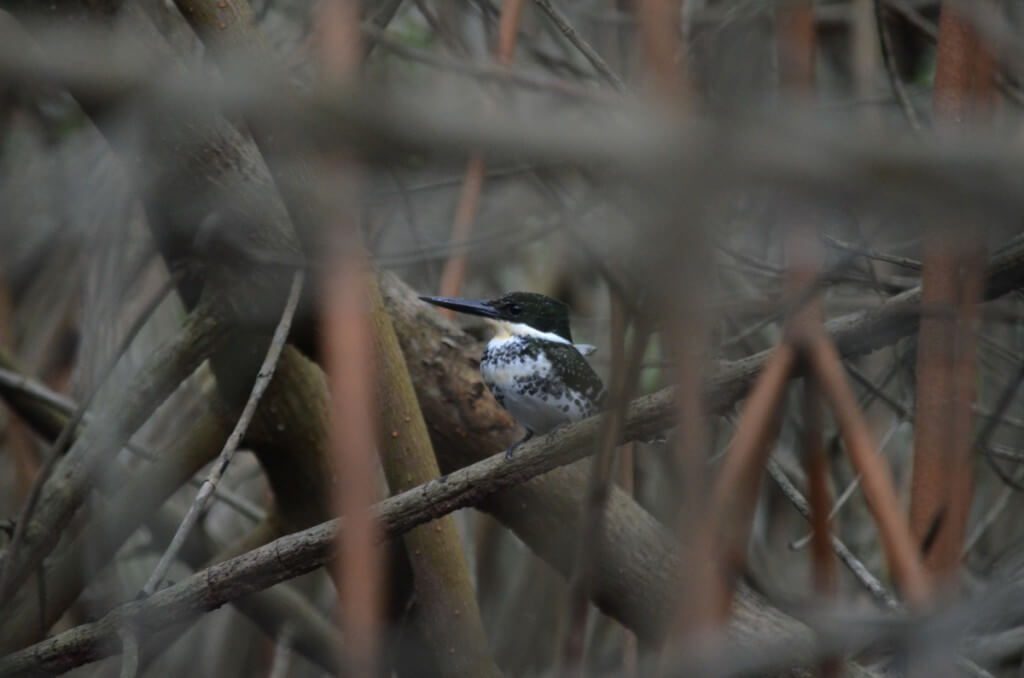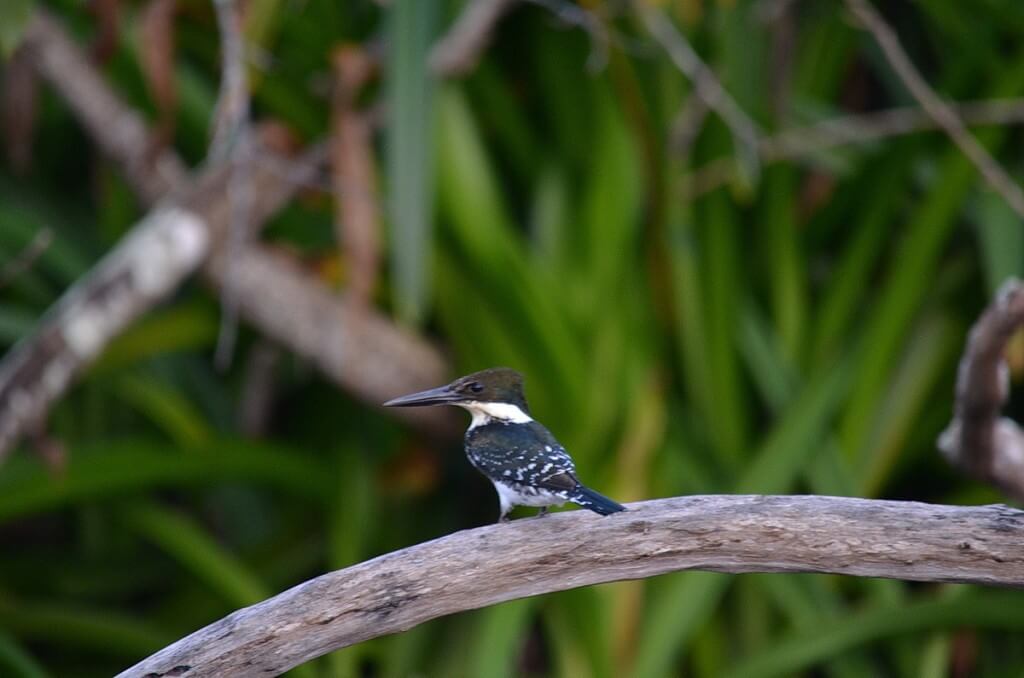Green Kingfisher In The Mangrove Swamp At San Blas
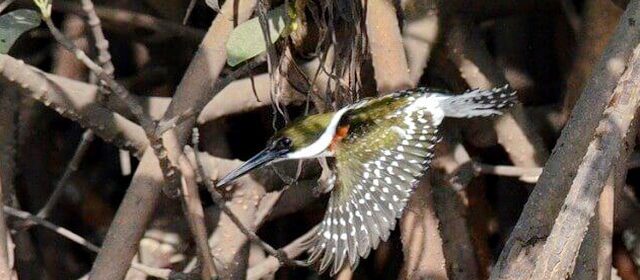
Bob and I were so excited as we set off from the pier on our mangrove swamp tour. With Chencho at the helm of our substantial launch, we were confident that many tropical birds would not allude detection. One species that caught our eye on several occasions was a Green Kingfisher, seen here perching at the edge of the San Cristobal mangrove estuary.
Our guided tour began near the El Conchal Bridge at the edge of town and proceeded first toward the mouth of the San Cristobal River where it joins the Pacific Ocean. Over the course of several hours, we would be conducted through the San Cristobal mangrove estuary and deep into the mangrove swamps of La Tovara National Park, a federally protected ecological preserve.
The day was perfect for just such an adventure with warm sunshine beating down on us and a light breeze to wash away our cares. I can at least claim to have seen a flash of white as this Green Kingfisher abruptly climbed into the air from where it was skimming the water’s surface. It brought itself up short onto this horizontal root of a mangrove tree where Chencho watched it land.
It was fortunate for us that the sunlight infiltrated the deep shadows cast by the mangrove trees so we could really appreciate the dark green head and even distinguish the bronze-coloured crown of the Green Kingfisher. We knew this to be a male by the band of rust plumage across the bird’s breast. Green Kingfishers are small birds, similar in size to a sparrow, but their dagger-like bill more resembles that of a heron.
The San Cristobal estuary provides perfect habitat for Green Kingfishers to forage for food. These birds prefer dense, low-growing vegetation upon which to perch along a waterway. From those vantage points, they watch for prey…small fish, aquatic insects, or crustaceans.
Once found, a Green Kingfisher will launch itself from its perch, zero in on its prey and make a steep dive into the water in order to nab it. We wondered, as this bird took flight, if it would be successful.
A few seconds later, this particular individual came back empty-handed. Green Kingfishers habitually return to the same perch from which they just flew and sit there to eat their catch.
As if to say that we were intruding on his space, this Green Kingfisher moved a few feet further along the edge of the shoreline and turned his back on us. I was happy for the different perspective, but we requested Chencho to slowly inch the boat closer to the bird’s next perch for an unobstructed view.
Sitting in full sunlight in order to dry off, the Green Kingfisher commenced preening its feathers and thus displaying the gorgeous white spotting on the bird’s tail. Bob and I were mesmerized because, when trying to photograph Belted Kingfishers in Ontario, Canada, they usually hop from one tree to the next along the shore of a lake or river as if showing us the way; and we do follow in hopes of getting a good snapshot.
It is amazing how deftly the Green Kingfisher could manipulate its long, straight bill to carefully clean and arrange its feathers. All the while, the three of us sat motionless in the quietly idling launch and absorbed the sounds of the mangrove jungle. Enough time spent observing this one bird; we had to move on because the estuary was buzzing with birds, and we hadn’t even entered the jungle yet.
Once under the dense cover of the mangrove trees that literally formed a living tunnel over the channels throughout the swamp, spotting wildlife of any sort became that much more difficult. That is where we thanked ourselves for having hired Chencho to be our guide because his keen eye was indispensable.
Peering through the thick tangle of mangrove roots turned up many different species of birds not the least of which was this female Green Kingfisher. The opportunity to see both a female and male of the species was a stroke of luck.
The absence of the rufous band across the chest is what distinguishes the female Green Kingfisher from the male. Being a little more discreet, this female held back in the shady confines of the snarled branches and roots, but still, we could appreciate the buffy-white throat, chest and underbelly and noted the two mottled-green chest bands.
How satisfying when the female Green Kingfisher decided to come out into the open and give us a better look. With the overhead branches of the mangroves blocking most light from the location, the female’s plumage appeared almost blue. And then it was time for us to forge onwards. There was so much more to see!
Frame To Frame – Bob and Jean

